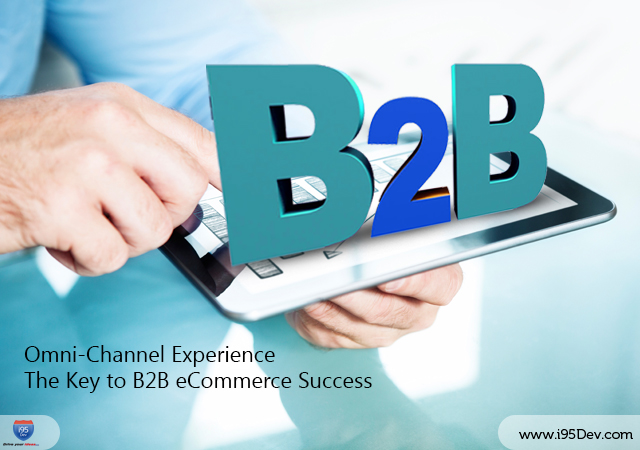B2B eCommerce is slated to be a trillion dollar industry and growing – Frost & Sullivan projects that B2B eCommerce will hit $12 trillion in sales worldwide by 2020, up from $5.5 trillion in 2012. What started as a realization at all levels with businesses that eCommerce increases revenue, lowers costs, and increases profits; subsequently led to manufacturers and distributors investing online to reach customers better and improve their shopping experience.
Most B2B companies realize today that success in B2B eCommerce stems from creating a customer purchase model that simulates the B2C trade environment as much as possible – creating that omni-channel experience. As businesses embrace the prospect of a virtual trading, whether it is a shift to investing on a B2B online store for the first time or if it is a change of an existing B2B platform, it is increasingly important that it is done right. The following aspects play an important role in helping businesses provide the omni-channel experience. But before we begin, it is crucial to understand that none of these aspects are independent of one another; while each aspect has to be worked upon diligently there is a need for cohesive effort for it all to come together.
1) Going Multi-Channel
With consumers consuming information across multiple devices and channels, it is imperative for businesses to be present across all these channels (at least the most important ones to your business) to capture their attention at the moment of decision making.
2) Provide Consistent Quality Content across Channels
Creating content does not have to be complex; put yourself in the shoes of your customers and give them all the information they need to make a decision. The type of content required in B2B is very different from that in B2C and hence requires a little more effort. It includes information like SKU (internal item number) numbers, manufacturer name, geographic origin, specifications, unit of measure, price, short and long descriptions, user manuals, installation manuals, material safety data sheets, hazardous material information, multiple images of the product in various angles, videos and more.
But, this can be a challenge with sales happening over multiple channels; presenting different information across channels can negatively impact your brand and the customer experience. Hence, it is important to not only focus on the quality of the content but also on delivering the same content across channels; this, depending on business needs, might warrant a product information management system (PIM).
3) Control overall Customer Experience
One of the biggest promises of omni-channel is delivering a consistent and unified shopping experience across channels and going multi-channel and providing consistent information across channels are only the first few steps of achieving it. The most important element of it is controlling the customer experience across all channels.
A chunk of what is offered in terms of experience in the B2C domain can be safely applied to the B2B domain; including site accessibility across devices, ratings and reviews, product description, robust navigation, simpler checkout process, and more. The only difference is the scale at which this happens; the nature of transactions here are large scale and repetitive.
At the same time to ensure you control the overall customer experience it is equally important to ensure that data from one channel is shared with all the other required channels. All channels are important today, it is but inevitable that all your efforts contribute towards building a 360-degree view of your customer. Buyers today expect an omni-channel experience where they can view product information, analyze activities, account history, take delivery, return and exchange across all channels.
4) Level of Personalization
Personalization is fast becoming the framework for the B2B customer experience with clear identification of personas and on-site behaviors that sets off all efforts in this direction. Segmentation precedes the exercise of personalization. Let us proceed with the reassurance that B2B users are used to logging in. So when they do, you know who they are the company they work for, location position and the company as well. So now you can-
- Work on a custom catalogbased on their contract, terms and conditions
- Contract pricingand volume pricing
- With this kind of profiling, you can work on the search and navigation in context of their contract(what products are they allowed to see)
- Segment content on the home page based on their industryapplicable
- Provide provisions of quick order or bulk order formfor quick ordering
- Payment of invoices etc.
- Segment your website by role- buyers, approvers
5) Integration to Support it all
Centralized information is central to providing the omni-channel experience. But, with so many disparate systems integration is the only solution to ensure that they are all talking to each other and presenting the same information (which drive decisions). The integration is not limited only to external systems like eCommerce but also internal or back-office systems like ERP, CRM and more.
Now all of this Functions Hand-in-Hand
While each of these aspects require substantial initial investments, ongoing maintenance, and periodic reviews; consider employing the services of advisers who understand your industry and the domain. It is also important to understand that the results are not instant and require ongoing effort to bear the fruit. B2B eCommerce builds over time with dedicated and planned strategies on each of these areas with a larger picture in mind.





